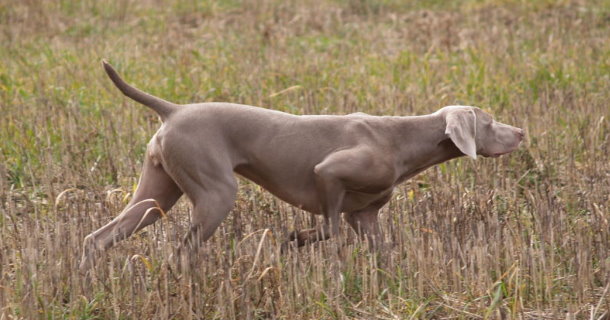
HPR Spring Pointing Test Guidelines
The emphasis of these tests is to be on the natural working ability of the dog on open ground assessing ground treatment, hunting and pointing with an element of steadiness. Spring Pointing Tests are an evaluation of potential in a pointing dog. Dogs to be run and graded as individuals not in competition with other dogs.
Categories – The Tests are judged in two categories:
JUNIOR – For dogs over 6 months of age and under two years of age on the 1st January in the year of the pointing test, to be judged on partridge, pheasant and grouse, ground game to be judged for steadiness only.
ADULT – For dogs over two years of age on 1st of January in the year of the pointing test to be judged on partridge, pheasant and grouse. All other game to be judged for steadiness only. An excellent grade can only be awarded on partridge. Very good or good may be awarded on pheasant at the judges’ discretion.
Basic Requirements
• Each dog shall be run singly into wind, to quarter a beat of at least 100 metres on open ground.
• Each dog shall be run for a minimum of 10 minutes before being considered for a grading. Each dog will be allowed 1 minute to settle unless out of control.
• Dogs are required to hunt, point, hold game and flush on command.
• Judging emphasis to be on the natural ability of the dog in the following order of priority: Ground Treatment: Game Finding: Pointing: Steadiness.
• Each dog graded to be given a verbal critique by the Judges and an Assessment Certificate at the end of the day.
Assessments
The ideal pattern is when the dog is searching for game and is completely in tune with the handler. The dog should hunt with drive, purpose and with good pace, ranging wide always turning into the wind and covering its ground with style. All game birds on its beat should be pointed and all other game honoured.
Credits
Good ground treatment/regular pattern – Turning into the wind – Natural ability to hunt without intervention – Game finding – *Good pace – *Correct head carriage (*when considering these aspects the judges must take into account the individual style of the different breeds.) – Steadiness to flush – Quiet handling.
Faults
Stickiness on point – Persistent False pointing – Persistent pointing of ‘larks’ – Persistently casting back on the wind – Unsteadiness – Catching healthy game.
Elimination Faults
Out of Control – Failure to Hunt or Point – Not covering sufficient ground – Chasing Game – Deliberately Flushing Game without pointing – Missing game birds on the beat – Whining or barking.
Assessment of EXCELLENT
The dog must work to the ideal pattern and exhibit all credits.
Assessment of VERY GOOD
The dog must be close to the ideal pattern without any persistent faults.
Assessment of GOOD
The work must be of a good standard showing natural aptitude but without high quality.
Judging Notes:• Dog to quarter with its nose on the wind with correct head carriage, enabling it to make contact with game scent.
• Quartering and turning on each flank into wind.
• Spending little or no time on ground or residual scent, giving only an indication of its presence.
• Positive indication of game, ideally holding until handler is in close contact and working forward with determination to final point. With correct head carriage the dog should directly flush, not losing contact and not foot scenting the game.
• Positive flush of game with dog steady. Game not to be chased in flight but exuberance quickly brought under control may be allowed for junior dogs.
• A grading can be considered if birds flush off the dog’s point on their own accord when the handler is not in close contact.
• Dogs which complete the card in their first run and are graded will not be required to run again.
Only dogs of sufficient standard, which have not obtained a grading in their first run, are to be considered for a second run. Judges should not be tempted to run a dog a second time to try and upgrade it if they have been able to give it a grading on its first run.
Reproduced with due acknowledgments to original author(s).


 Posted in
Posted in 


